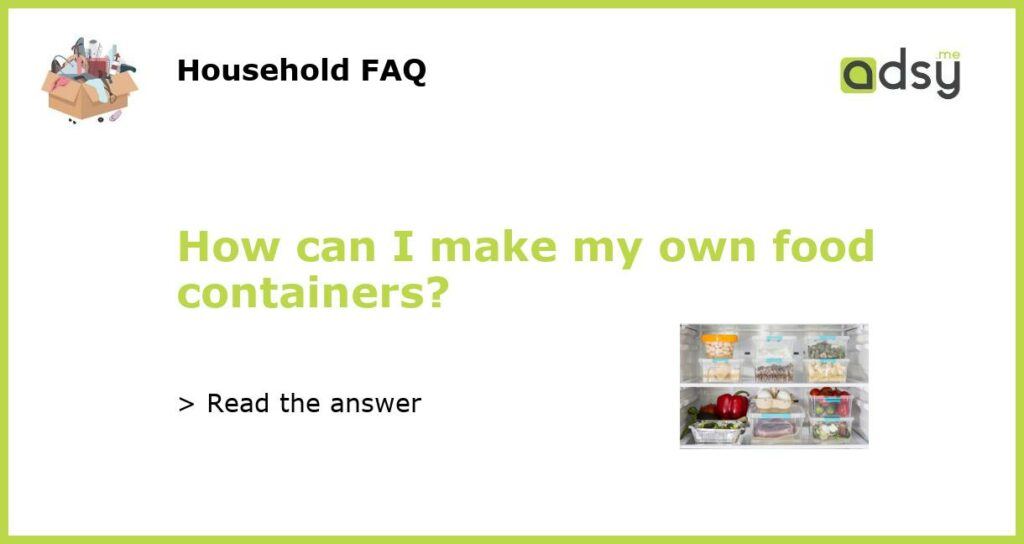Single-use plastic containers are a major contributor to pollution and waste in our environment. Making your own food containers is an easy way to reduce your personal impact and avoid contributing to the problem. This guide will give you step-by-step instructions on how to make your own food containers, whether you’re looking to replace plastic containers or simply looking for a fun DIY project.
Materials
The materials you’ll need to make your own food containers will depend on the specific type of container you’re making. However, common materials include:
- Glass jars or bottles
- Metal tins or containers
- Food-grade silicone
- Beeswax wraps
- Fabric and thread for sewing your own reusable bags
DIY Food Containers
Here are a few simple DIY food container ideas to get you started:
Glass Jars
Glass jars are a versatile option for storing food, and you can easily make your own lids using food-grade silicone. Simply measure the diameter of the jar opening and buy a silicone lid that fits. You can also use a piece of fabric or paper to cover the jar and secure it with an elastic band. Another option is to use reusable silicone food bags, which are great for storing snacks and sandwiches.
Metal Tins
Metal tins or containers can be perfect for storing dry foods like nuts, seeds, and dried fruit. To make your own, simply clean out an old metal tin and decorate it with paint or washi tape. You can also buy pre-made metal tins in a variety of shapes and sizes online or at your local craft store.
Beeswax Wraps
Beeswax wraps are a great alternative to plastic wrap for storing food. To make your own, you’ll need beeswax pellets, fabric, and an iron. Simply melt the beeswax in a double boiler, then lay the fabric flat and brush the melted wax onto the fabric. Use the iron to spread the wax evenly, then let the wrap cool and harden. You can cut the fabric to size and use it to wrap sandwiches, cheese, vegetables, and more.
Reusable Bags
Sewing your own reusable bags is a great way to reduce waste and avoid using plastic produce bags at the grocery store. You can make bags in a variety of sizes and shapes to fit all of your food storage needs. Use a durable fabric like cotton or canvas, and sew the bags with a sturdy thread. You can also use mesh fabric for produce bags that allow for better airflow.
By making your own food containers, you can reduce your environmental impact and have fun creating unique and functional storage solutions. Experiment with different materials and designs to find the perfect container for your needs, and enjoy the satisfaction of knowing that you’re doing your part to reduce waste and pollution.






![[10-Pack]Glass Meal Prep Containers -MCIRCO Food Storage Containers with Lifetime Lasting Snap Locking Lids, Airtight Lunch Containers, Microwave, Oven, Freezer and Dishwasher](https://m.media-amazon.com/images/I/41ZdkMs1ciL.jpg)